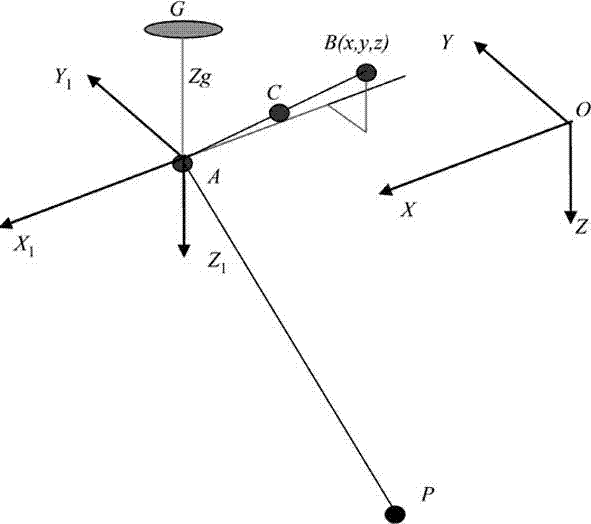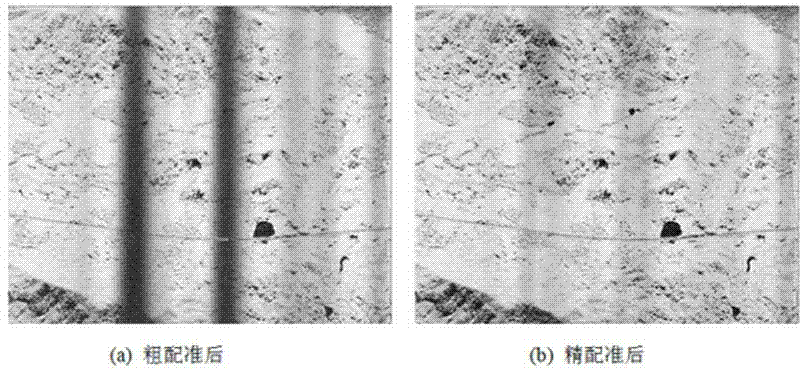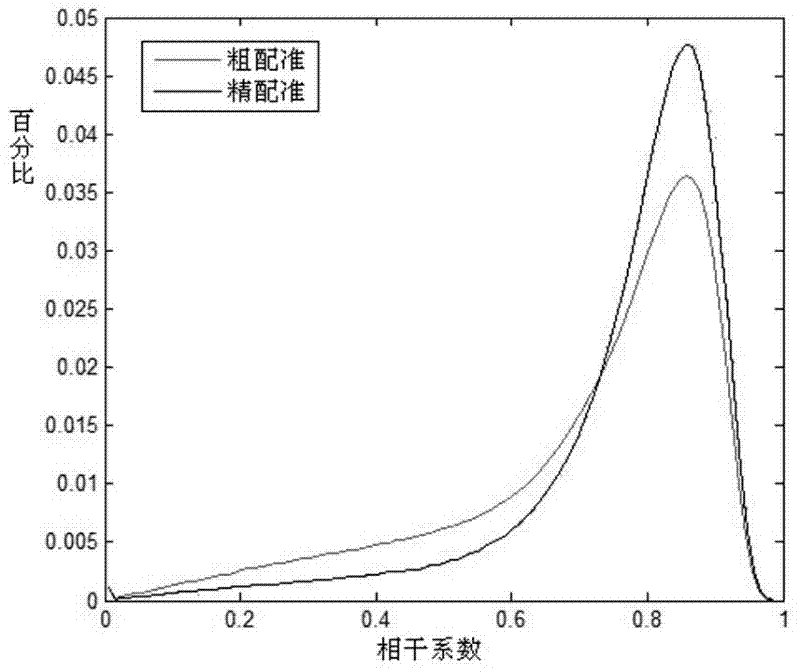A kind of interference processing technology of airborne non-vertical dual-antenna interferometric SAR system
A dual-antenna, non-vertical technology, used in radio wave measurement systems, radio wave reflection/re-radiation, utilization of re-radiation, etc., can solve the problems of backwardness, no spaceborne interferometric SAR system, etc., to achieve the effect of promoting development
- Summary
- Abstract
- Description
- Claims
- Application Information
AI Technical Summary
Problems solved by technology
Method used
Image
Examples
Embodiment Construction
[0049] The present invention will be further described below in conjunction with the accompanying drawings.
[0050] For airborne dual-antenna interferometric SAR, the coarse registration accuracy can be achieved after simple translation of the main and auxiliary images. image 3 (a) is the coherence coefficient map of the main and auxiliary images after rough registration. From the figure, we can see that along the azimuth direction, there are many areas of low coherence. These areas correspond to the moment when the parameters in the aircraft inertial navigation data change suddenly.
[0051] After rough registration, the overall offset of the main and auxiliary images is about 1 pixel, and the local area (mainly at different azimuth times) has a large registration offset due to aircraft shaking. Therefore, at this time, it is necessary to accurately estimate the registration parameters in the local area. According to the local fine registration algorithm, select 16*16 gr...
PUM
 Login to View More
Login to View More Abstract
Description
Claims
Application Information
 Login to View More
Login to View More - Generate Ideas
- Intellectual Property
- Life Sciences
- Materials
- Tech Scout
- Unparalleled Data Quality
- Higher Quality Content
- 60% Fewer Hallucinations
Browse by: Latest US Patents, China's latest patents, Technical Efficacy Thesaurus, Application Domain, Technology Topic, Popular Technical Reports.
© 2025 PatSnap. All rights reserved.Legal|Privacy policy|Modern Slavery Act Transparency Statement|Sitemap|About US| Contact US: help@patsnap.com



